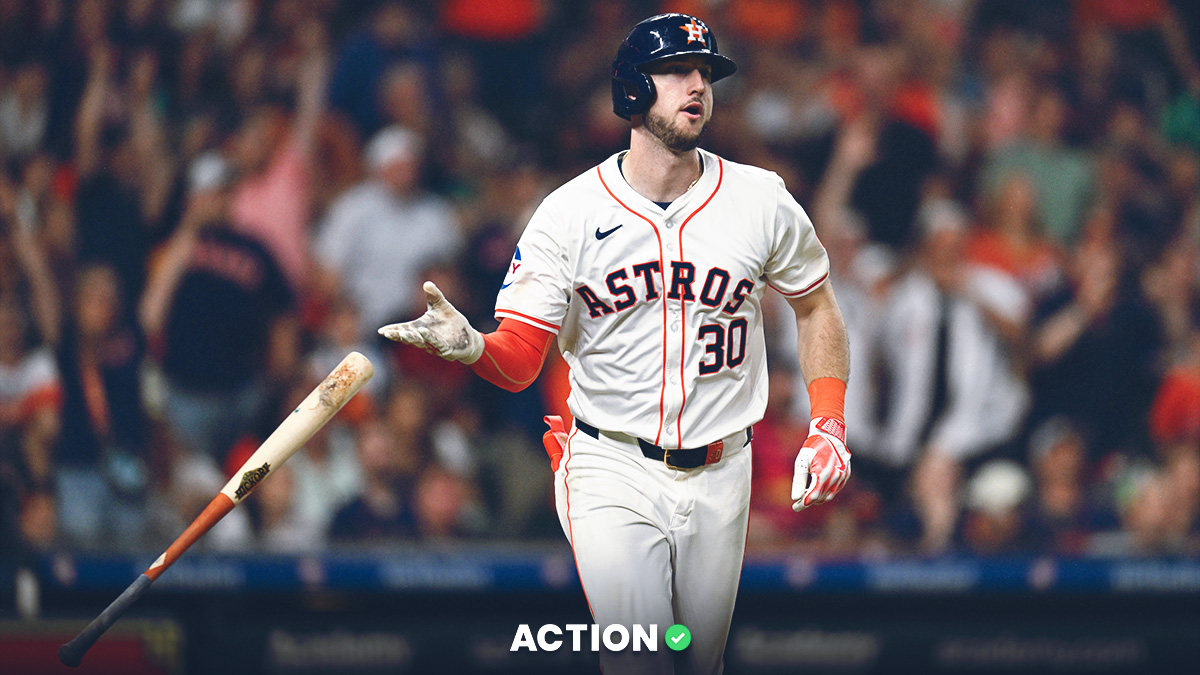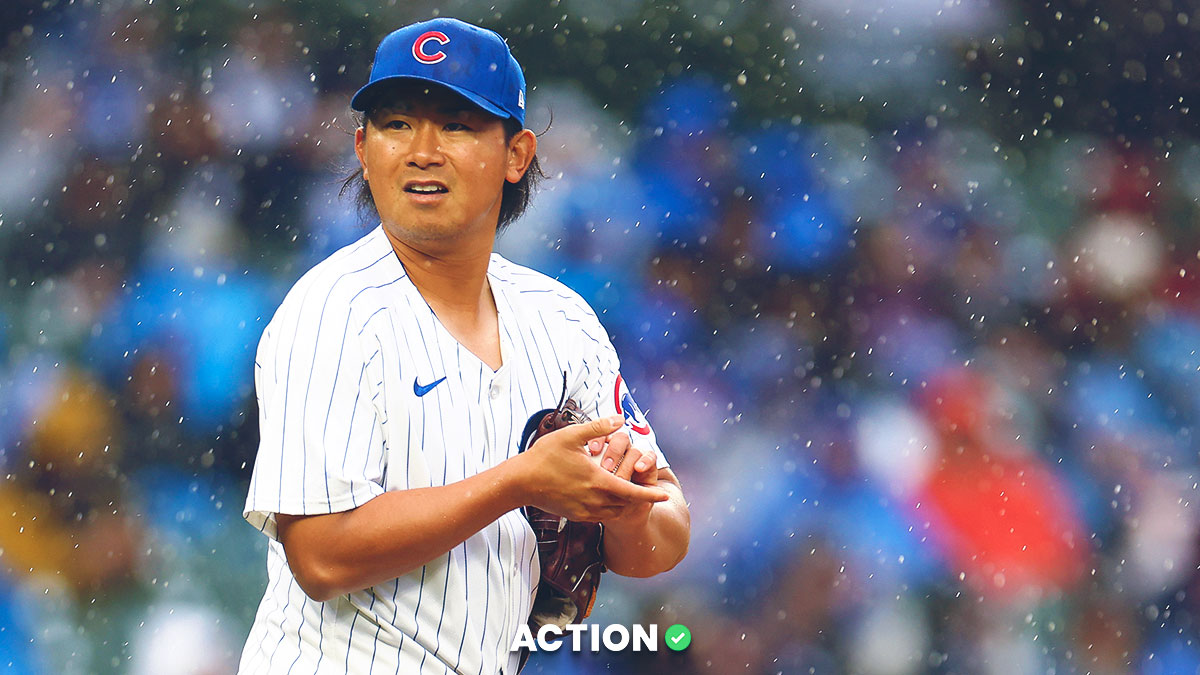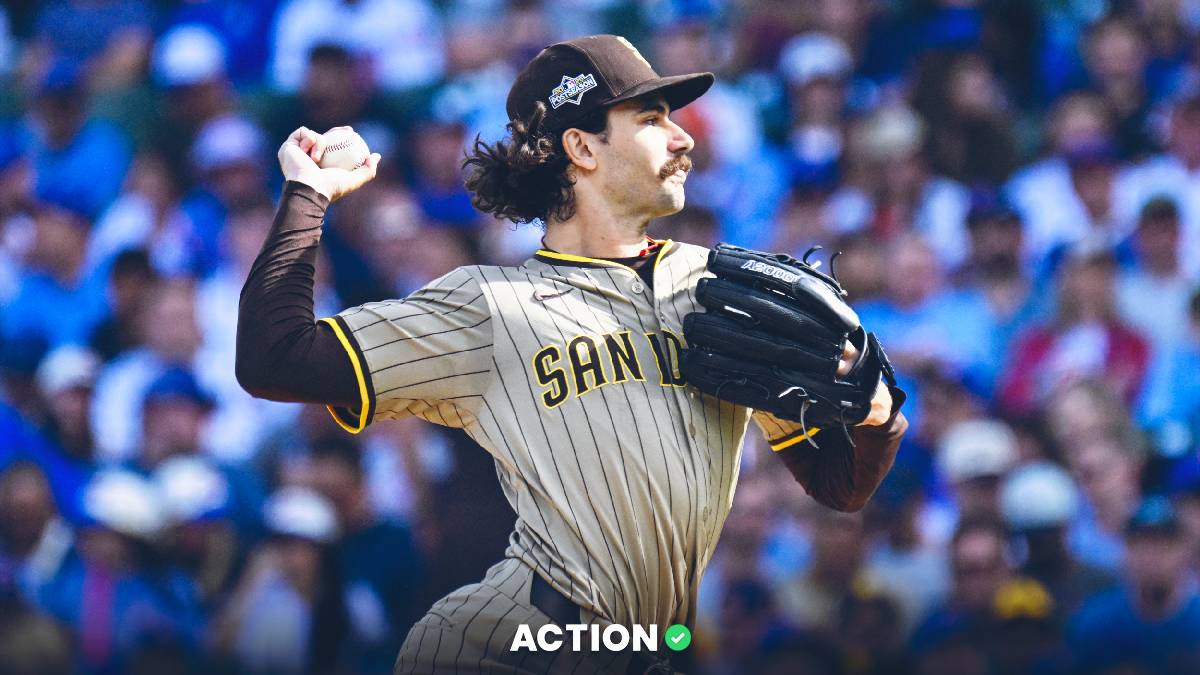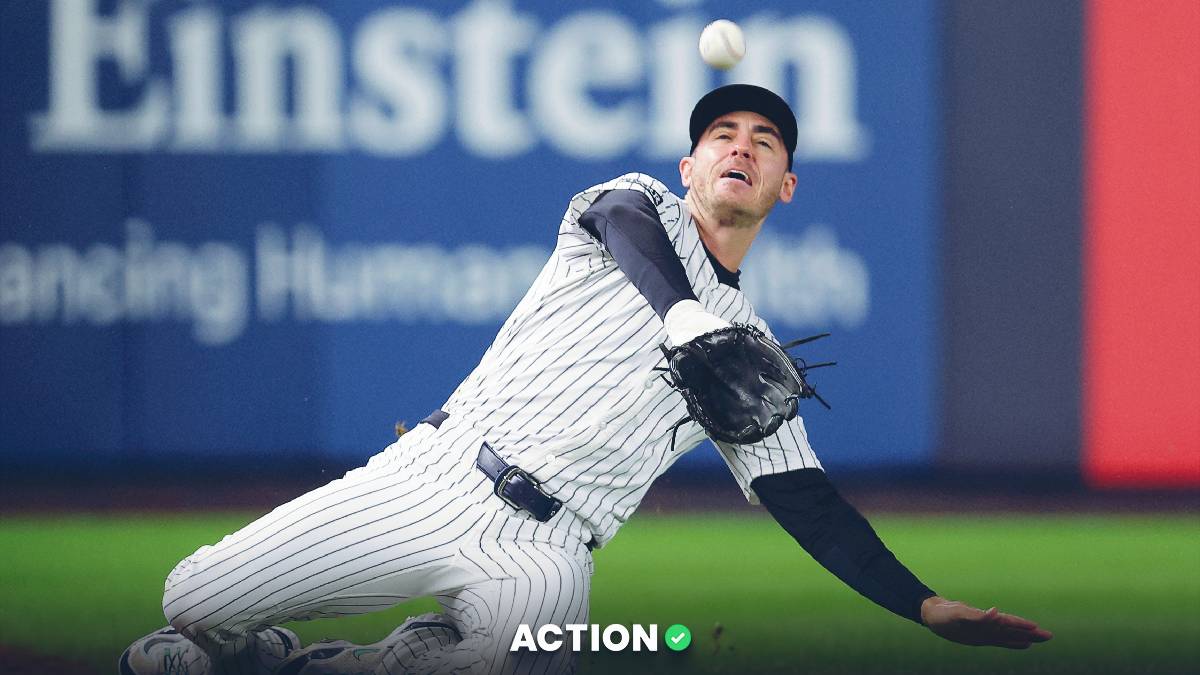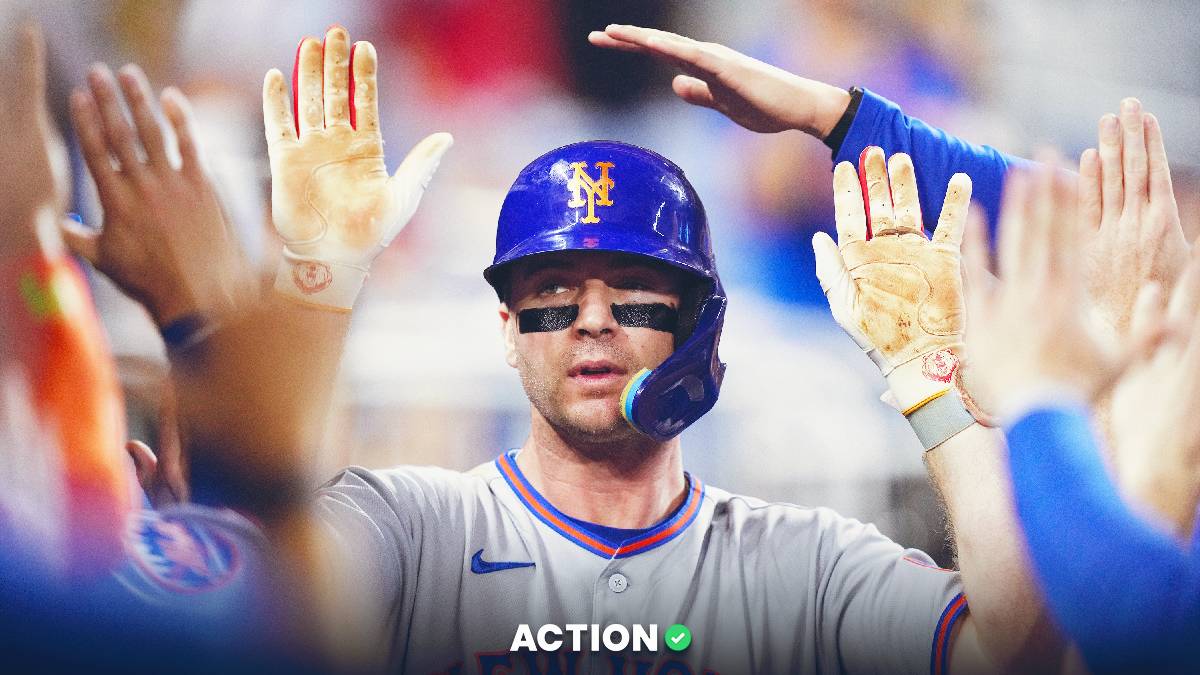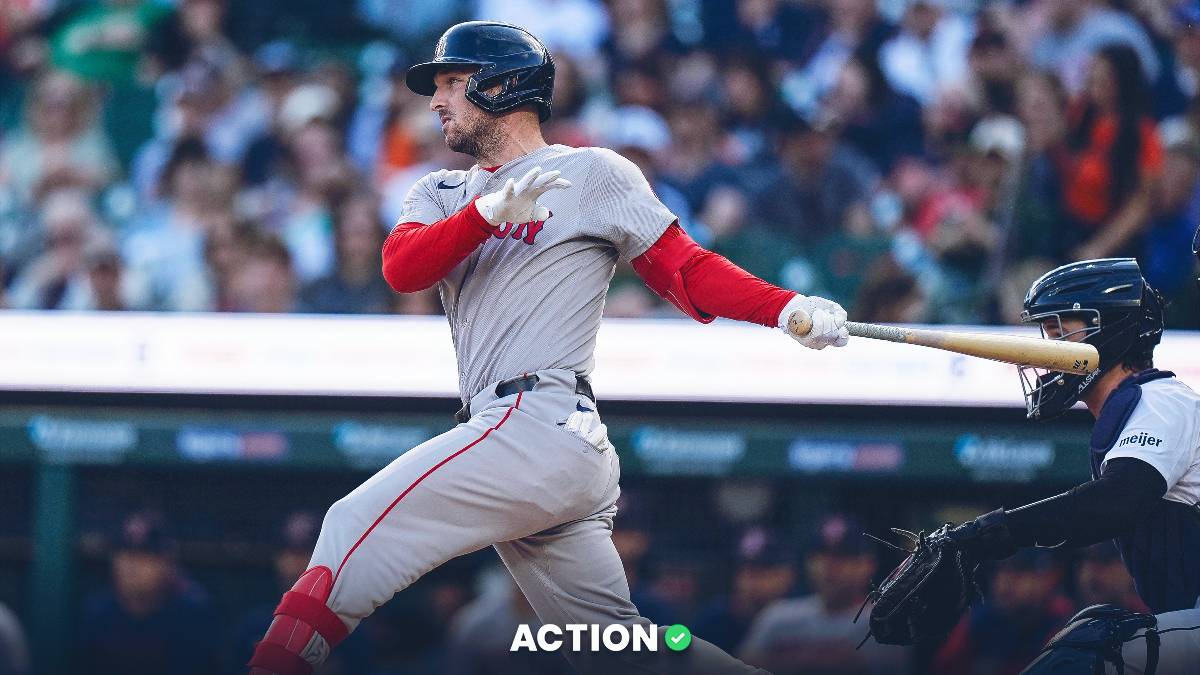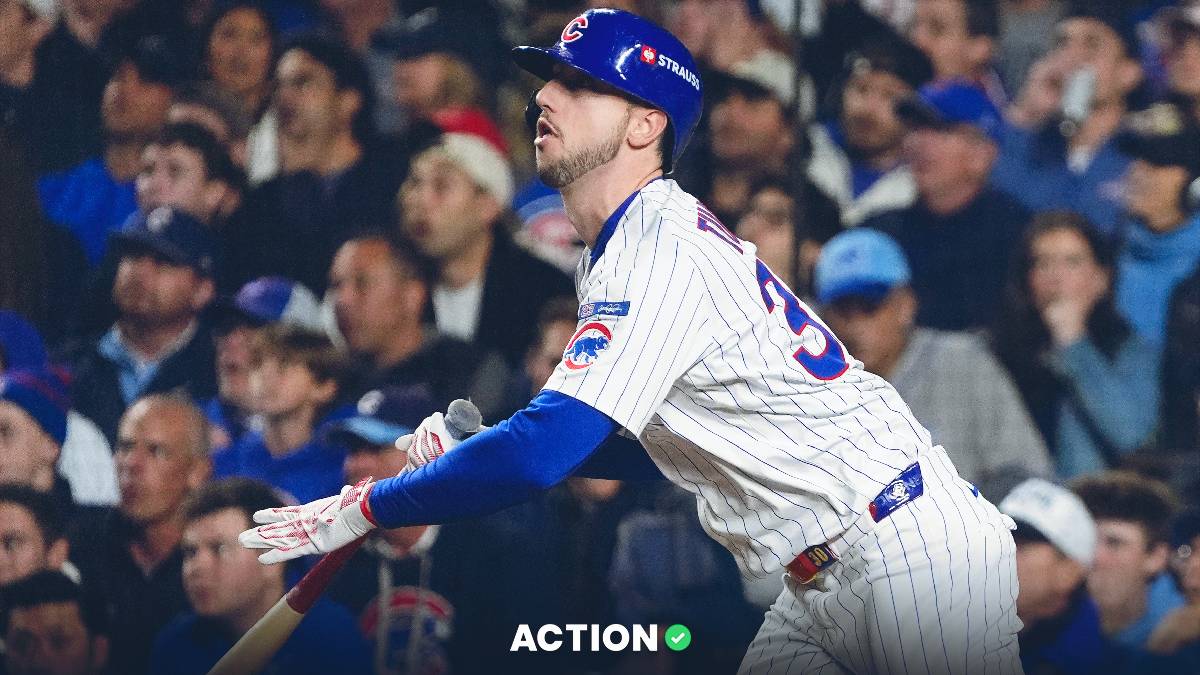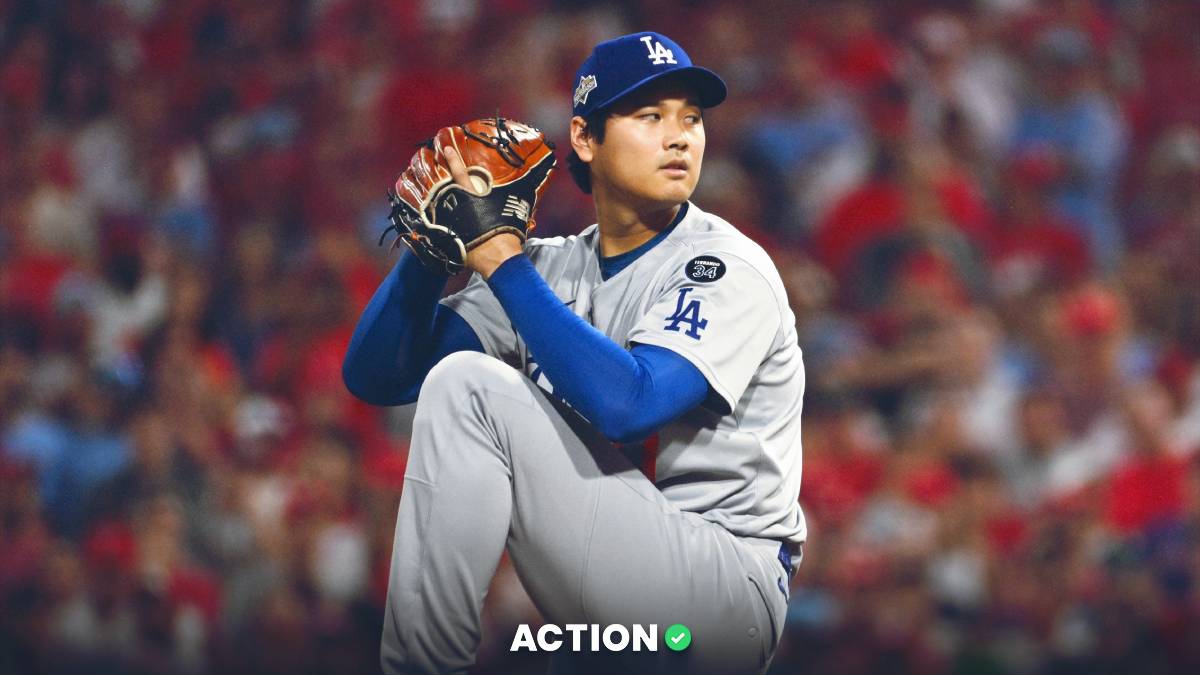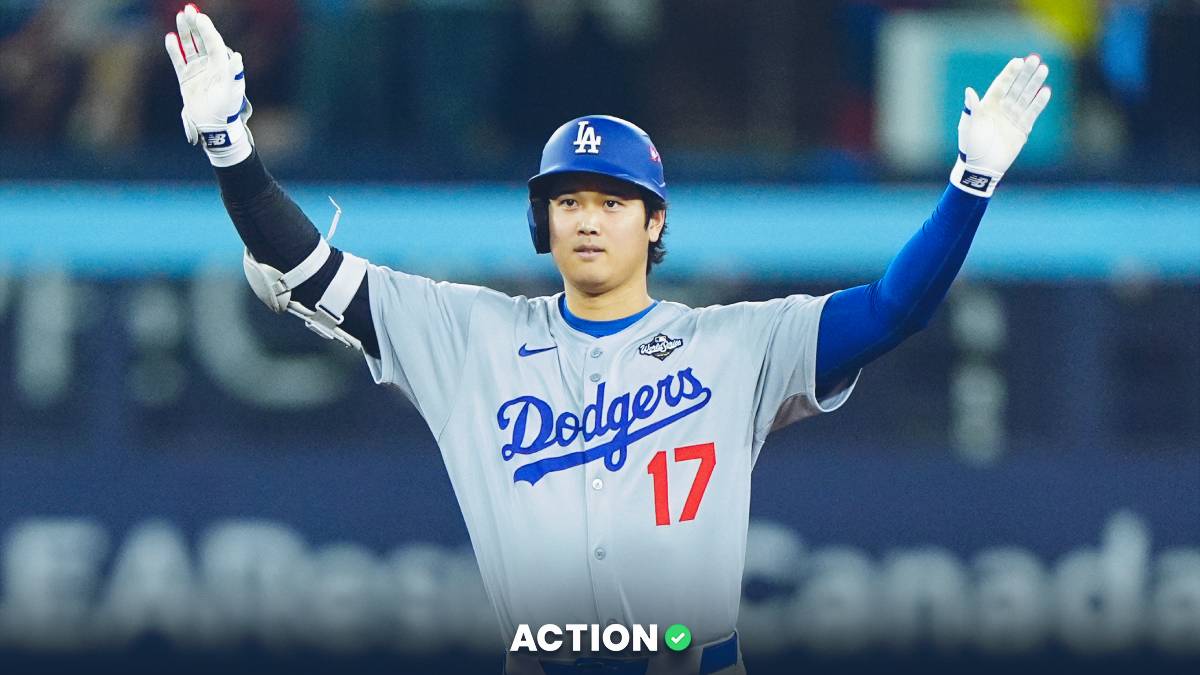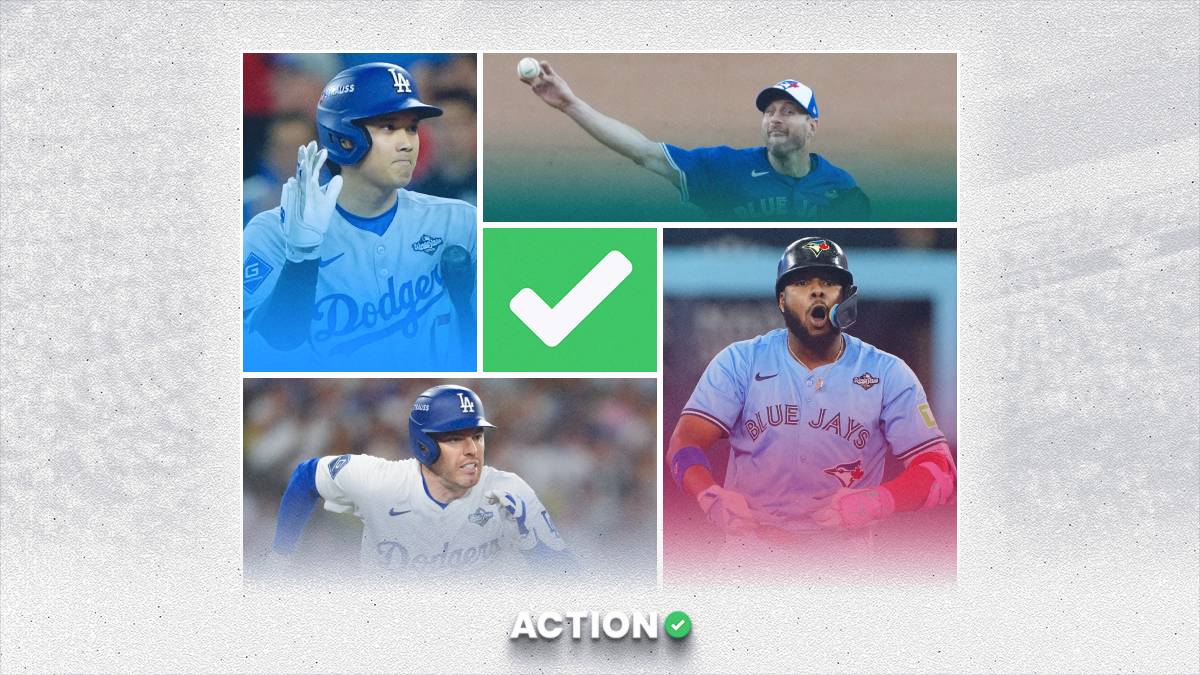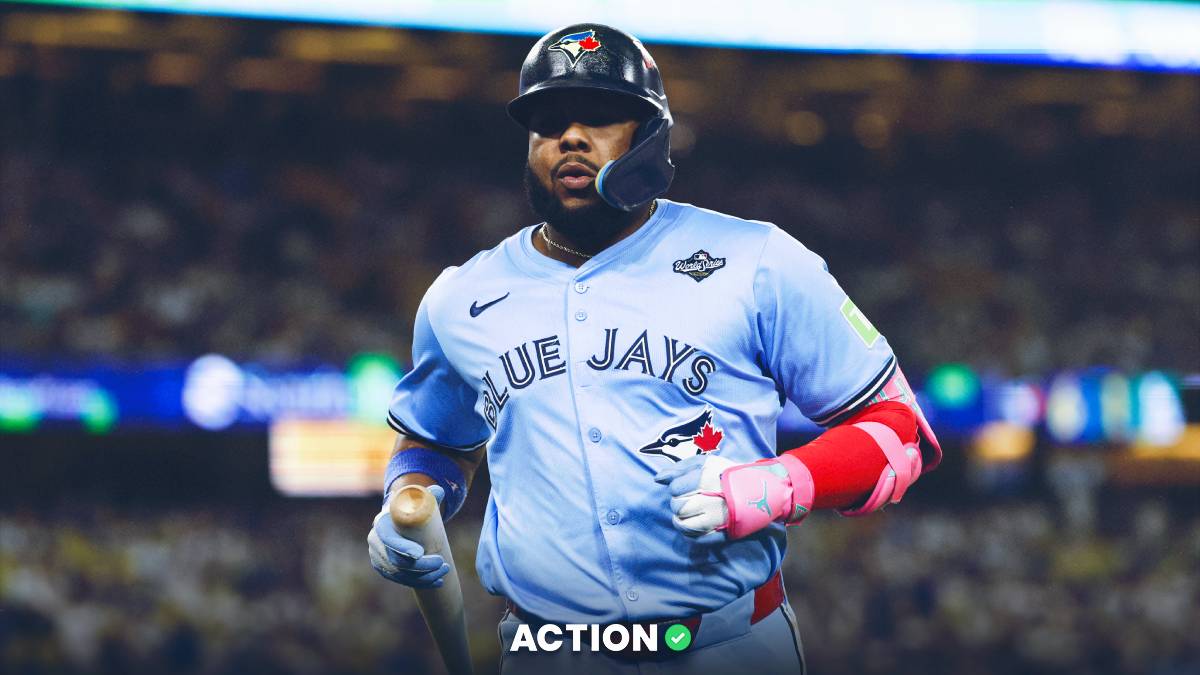MLB discourse in 2024 is dominated by the Dodgers.
“Wow! Shohei Ohtani and Mookie Betts are doing things never seen before!”
Young superstars Bobby Witt Jr. and Gunnar Henderson get all the love in the American League. And rightfully so, considering the two rank second and third, respectively, among MLB hitters in fWAR.
Throwing Juan Soto into the Yankees lineup with Aaron Judge has led to some incredible Bronx Bombing. The Yankees have posted a ridiculous 132 wRC+ over the past month, nine points higher than any other MLB lineup.
But you’ll never guess who leads MLB in fWAR this season …
It’s Kyle Tucker, with a whopping 3.4 that’s a few ticks ahead of Ohtani’s 3.2.
Why are we overlooking Tucker when he’s assembling a truly historic stretch of baseball?
Probably because the Astros are struggling. They're six games under .500 and 4 1/2 games back in the AL West race.
But that’s not Tucker’s fault. It’s not even the lineup’s fault — the Astros are mashing.
I desperately wanted to write about Tucker’s evolution into a super-duper star and how it fits into the 'Stros at-large picture.
So, let’s do it.
Background
There was nothing wrong with Tucker.
He was the fifth pick in the 2015 MLB Draft and he has met every expectation up to this point. A model of consistency and durability, Tucker has played over 140 games and recorded between 4.9-to-5.0 fWAR and 29-to-30 homers in each of the past three seasons.
Tucker's also great on the basepaths, recording 55 steals over the past two years. He’s also a solid — albeit unspectacular — right fielder.
He’s always been relatively patient, has never struck out much and has always shown an innate ability to square the ball up.
He’s earned two All-Star appearances as a result. He finished fifth in MVP voting in 2023. He was instrumental in Houston’s 2022 title run, crushing two homers in World Series Game 1.
But it’s always felt like Tucker was on the precipice of something bigger. With a few tweaks here and there, the 27-year-old could explode as he enters his prime.
I think he’s made those tweaks.
Newfound Plate Discipline
Tucker has stopped swinging.
His swing rate has dropped to a ridiculously low 40%, a 13% drop from 2022. He’s stopped chasing pitches outside the zone, with a meager 19% chase rate, the second-lowest mark among qualified hitters. But he’s also stopped swinging at pitches inside the zone, which has helped lower his swinging-strike rate to a minuscule 7.4%.

The most significant result of swinging less – specifically chasing less – is more walks. But Tucker isn’t just getting on base, he’s walked (41, 19%) more than he’s struck out (36, 17%) across his first 49 games.
He has the highest walk rate of any qualified hitter at 18.7%. Only Judge has earned as many free passes.
As a result, Tucker’s OBP has jumped to a career-high .422, a marked increase from his previous single-season high (.369). He's tied with Ohtani for the third-highest OBP mark among qualified hitters, only behind Betts (.430) and – surprisingly – Jurickson Profar (.431).
Tucker has actually experienced a slight decrease in his contact rates, so he’s not accomplishing this in a Luis Arraez or Steven Kwan fashion. Instead, he’s literally just not swinging.
But when he does swing, he’s swinging at the right pitches.
Making the Right Swings
In November, Baseball Prospectus’ Robert Orr introduced SEAGER, an acronym for Selective Aggression Engagement Rate, a metric designed to “measure selective aggression on hittable pitches.”
Swinging aggressively at smart pitches is the ultimate way to simultaneously increase your power and plate-discipline numbers, which is how the best hitters reach their peak. The metric was named after Corey Seager, who led all hitters in the metric last season. The Rangers won the World Series because they made smart and aggressive swing decisions.
Last year, Tucker ranked in the 80th percentile among qualified hitters in SEAGER. While that metric isn’t widely available yet, there are ways to analyze Tucker’s swing decisions this season – and those decisions are elite.
For starters, here’s Tucker’s 200-pitch rolling Strikezone Judgement+ chart (via Pitcher List).

This is described as “the "correctness" of a hitter's swings and takes, using the likelihood of a pitch being called strike (for swings) or a ball/HBP (for takes).
That checks out. Tucker leads MLB in Baseball Savant’s swing/take run-value added (+25), swinging on 74% of pitches in the heart of the zone while laying off 90% of pitches in the chase zone.

Here’s Tucker’s 200-pitch rolling Decision Value graph, described as the “modeled value [runs per 100 pitches] of a hitter's decision to swing or take, minus the modeled value of the alternative.”
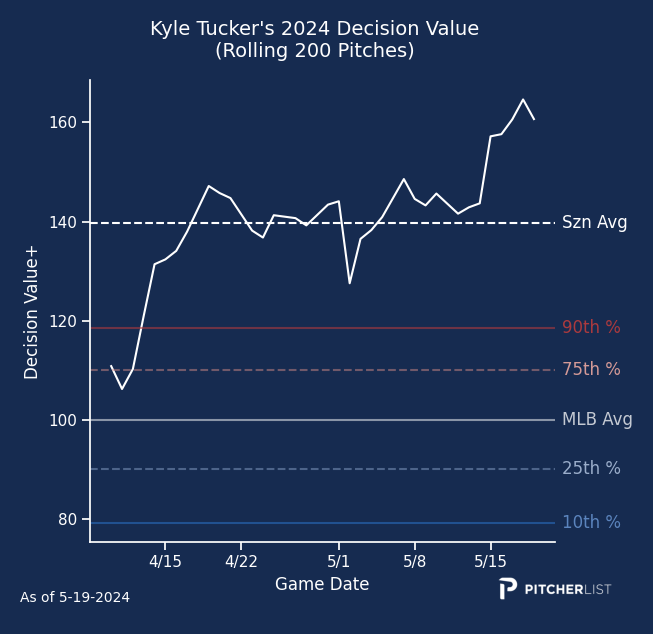
Here’s the same metric broken down into in-zone and out-of-zone decision-making.
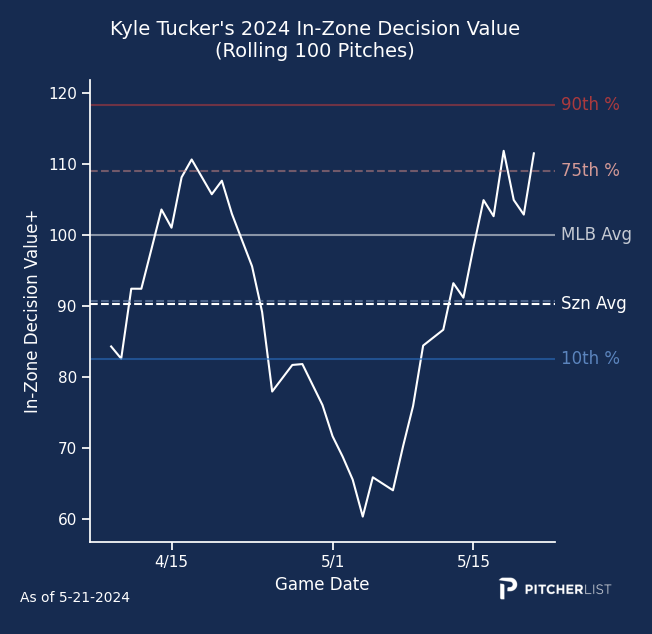
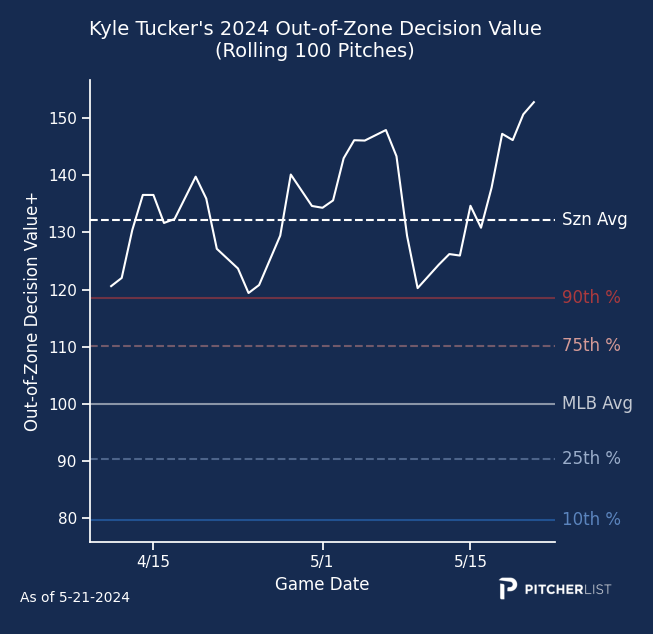
Yeah, it’s all elite.
But what does that mean?
Some Extra Pop
Imagine if a batter only swings – and swings aggressively – at offerings he can square up and drive.
What do you think would happen?
The batter would likely crush those pitches while laying off pitches he can’t crush. That’s exactly what’s happening with Tucker.
He’s always had power, as evidenced by his 119 career homers. But the direct result of his improved decision-making is added pop, as he’s increased his ISO by over 100 points year-over-year to a career-high .350, the highest mark among qualified hitters.
Specifically, he’s elevating friendly offerings, posting a career-high 54.6% fly-ball rate and 22-degree average launch angle. Toss in his ever-elite exit velocity (career 91 mph), and Tucker is barreling more balls than ever before – his former career high in barrels was 52, but he’s on pace for 75 this season at a 15% clip.
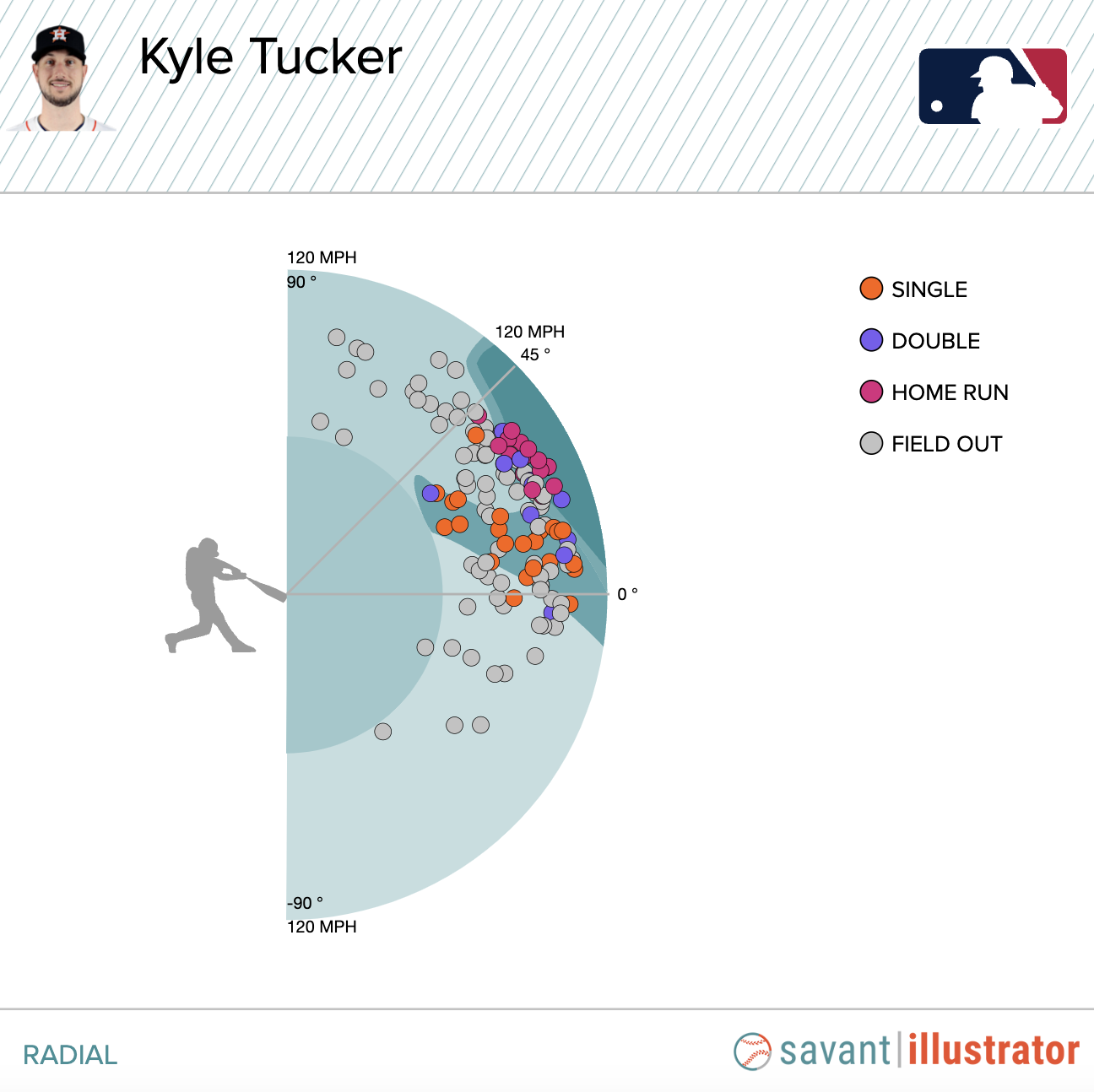
The key to unlocking power is hitting the ball hard and in the air. Tucker is accomplishing that through smarter swing decisions.
For example, history suggests that fastballs have the most damage attached to them, as evidenced by Red Sox and A’s pitchers ditching fastball-heavy approaches for more breaking balls, resulting in drastic year-over-year improvements in run prevention.
Look at Tucker’s swing rates on in-the-zone four-seam fastballs:
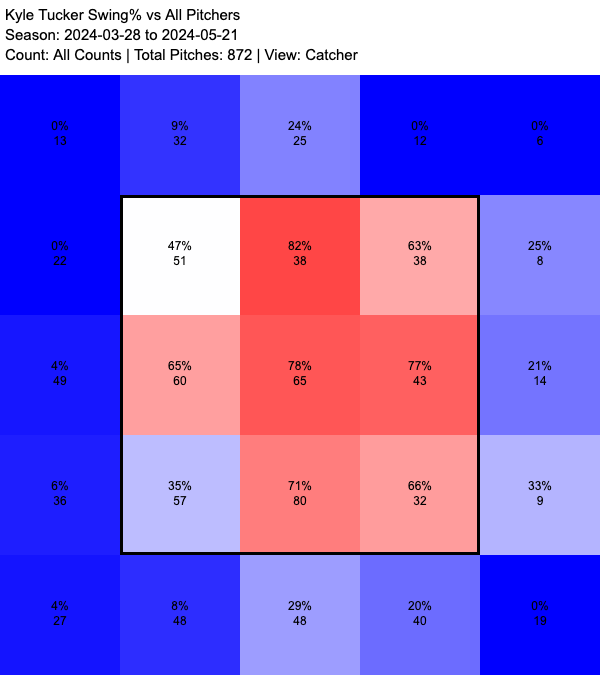
Now compare that with Tucker’s wOBA against those fastballs:
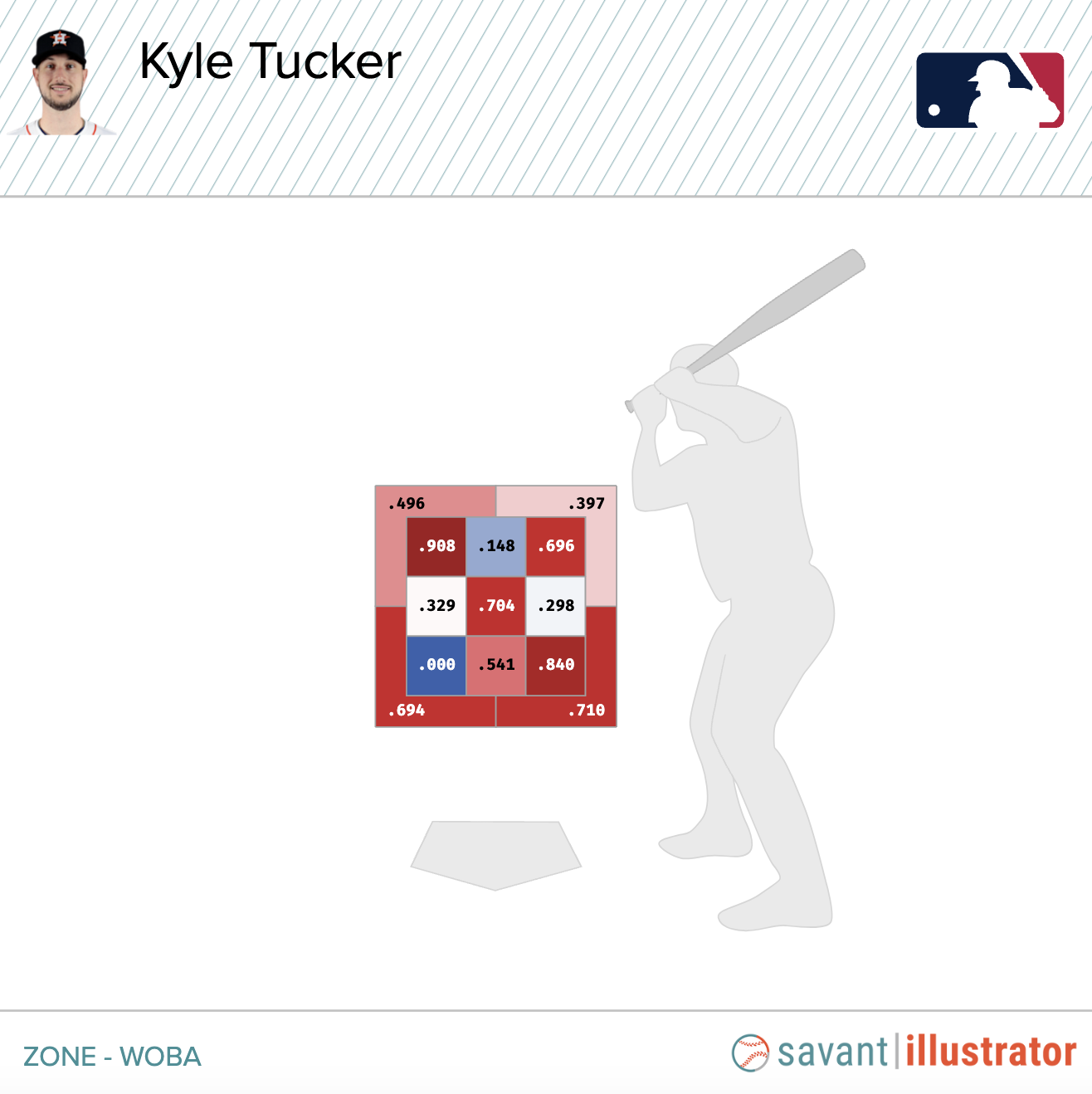
Are you putting the pieces together?
Tucker has obliterated heaters this year, slugging .797 against the pitch on a 60% hard-hit rate with a 96 mph average exit velocity and a 27-degree average launch angle. He’s hit 13 homers and seven doubles on the pitch while striking out only 21 times on a 14% whiff rate.
Tucker’s +16 Run Value against four-seam fastballs is the highest mark for any batter against any specific pitch type this season – by five points. Profar, Alec Bohm and Adley Rutschman have all posted a +11 mark against four seamers.
He’s attacking the right pitches at the right times, and it’s resulted in extraordinary production.
Is This All Sustainable?
Let’s look at Tucker’s year-over-year improvements.
| Year | OPS | wOBA | wRC+ |
|---|---|---|---|
| 2023 | .886 | .372 | 140 |
| 2024 | 1.060 | .450 | 197 |
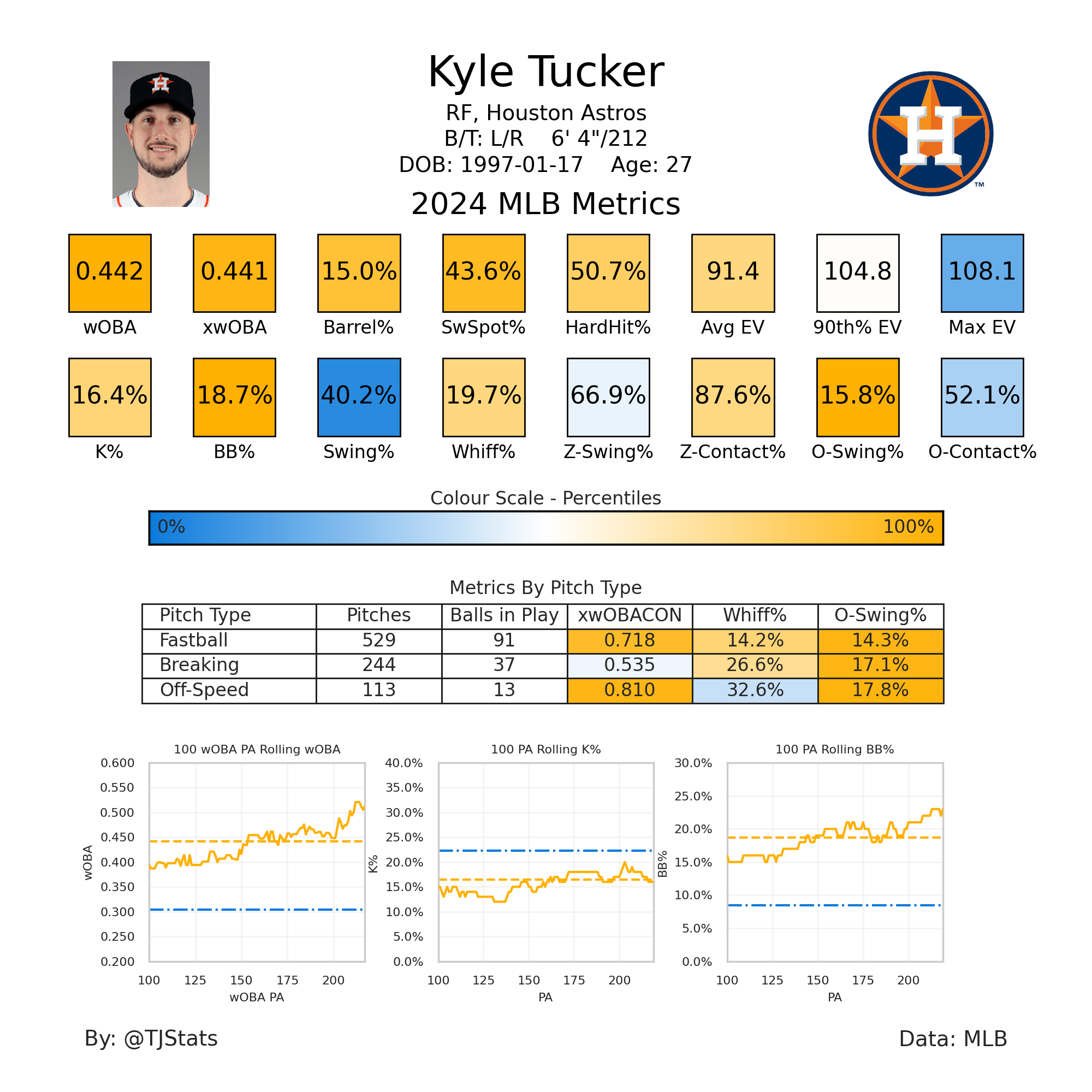
And let’s look at where he stacks up against the rest of the league in a bunch of key statistics.
| Statistic | Kyle Tucker | MLB Rank (Qualified) |
|---|---|---|
| Home Runs | 17 | 1st |
| Walks | 41 | T-1st |
| Walk Rate | 18.7% | 1st |
| OBP | .422 | T-3rd |
| SLG | .638 | 3rd |
| OPS | 1.060 | 2nd |
| FB% | 54.6% | 4th |
| GB/FB | .49 | 3rd |
| Barrels | 21 | 10th |
| Chase% | 19.4% | 2nd |
| SwSt% | 7.5% | 24th |
| wOBA | .450 | 2nd |
| wRC+ | 197 | 2nd |
| fWAR | 3.4 | 1st |
According to FanGraphs' on-pace metrics, Tucker’s on pace for 56 homers, 36 doubles, 118 RBIs, 132 walks, 30 stolen bases and a league-high 11.0 fWAR across 711 plate appearances. Aside from Judge’s 11-fWAR 2021, the last hitter to amass that many single-season wins was Barry Bonds in 2004.
Tucker might be the best hitter in baseball — at least to this point in the season. But is it reasonable to expect he can keep it up?
Yes and no.
Tucker’s improvements are directly tied to his elite plate discipline and swing decisions. At the minimum, he’ll likely finish the season as baseball’s smartest hitter, and it’s reasonable to suggest that will lead to near-MVP-level results across an entire season.
However, I question if Tucker has the raw power inputs to finish the year with MLB’s best offensive marks. He ranks in the 60th percentile among qualified hitters in average bat speed (72 mph) and 84th percentile in average exit velocity (92 mph), which is not on par with the best power hitters in the game – for example, Ohtani has posted a 95 mph average exit velocity (99th percentile) on a 75 mph average bat speed (91st percentile).
While Tucker’s expected statistics are mostly aligned with his actual results, he’s overperforming just a tad. He’s slugging about 50 points over expectation (.649 to .599), and he’s hitting about 20 points over his expected wOBA (.456 to .436).
Part of that is because he's benefitted from hitting toward a shorter right-field porch at Minute Maid Park. Statcast projects his expected home run mark closer to 12 than 17. His 17 homers would've been eight if he played every game at Fenway Park or Wrigley Field.
Therefore, Tucker ranks eighth in expected slugging and fifth in expected wOBA, still trailing the elite hitters of the game. Ohtani leads both categories (.710 expected slugging, .483 expected wOBA), with Judge, Soto and Marcell Ozuna trailing closely behind.
| Player | Barrel% | xSLG | xwOBA |
|---|---|---|---|
| Shohei Ohtani | 20.3% | .708 | .482 |
| Juan Soto | 19.6% | .672 | .463 |
| Aaron Judge | 27.3% | .692 | .457 |
| Marcell Ozuna | 17.2% | .674 | .453 |
| Kyle Tucker | 14.9% | .590 | .432 |
It’s fair to suggest Tucker will regress slightly, and maybe he won’t earn the coveted AL MVP.
But the floor is a top-five hitter behind the smartest decisions in the game.
What it Means for Houston
There are two direct results from Tucker's breakout campaign.
First, Houston better offer Tucker a monster extension immediately. He’s under team control through 2025, when he’ll be the most highly projected 28-year-old free agent.
Second, Tucker can help propel Houston back into the playoff picture. I went on Payoff Pitch on Tuesday and talked about the Astros divisional chances:
After a few lousy losses to the Angels, the odds have moved a bit. PECOTA projects the Astros win the AL West around 43% of the time, while FanGraphs is closer to 34%. But you can grab Houston’s divisional odds at +240 on DraftKings, implying a 29% probability.
- Check out the new user DraftKings promo code offer before placing your bets on the Astros.
Aside from pure math, I think the Astros are about to turn their disastrous start around.
For starters, they’ve been bitten by close-game variance. Houston lost nine of its first 10 one-run games and four of its first five extra-inning games. Tough. Variance-driven luck like that can make or break a season – the Marlins made the playoffs last year despite a -56 run differential because they went 33-14 in one-run games.
The Astros have finally turned things around over the past few weeks, winning 10 of their past 14 games — partially because they won four-of-five one-run games and both extra-inning affairs during the stretch.
There’s more room for positive regression. The Astros are still only 5-10 in one-run games and underperforming their Pythag record by two games.
It’s also worth mentioning they’ve put the hardest part of their schedule behind them. The Astros have already played seven games against the Yankees (1-6), three against the Braves (0-3), three against the Brewers (2-1) and three against the Cubs (0-3).
As a result, the Astros have the second-easiest remaining strength of schedule in MLB (.485). They get seven more games against the White Sox, 10 against the A’s and 12 against the Angels.
Meanwhile, they may be behind the pace in the AL West, but the bar isn’t high. Seattle has the worst record (27-22) and run differential (+5) of any current division leader.
But I’m mainly taking this position because of on-the-field stuff.
Houston’s biggest problem this season has been pitching. The Astros have amassed the lowest pitching fWAR (1.0) of any MLB team, ranking 28th in ERA (4.63), FIP (4.28) and expected FIP (4.30).
That’s partially due to poor injury luck. The Astros have spent the majority of the season without Justin Verlander, Luis Garcia, Lance McCullers, Jose Urquidy, Framber Valdez and Kendall Graveman.
In their stead, young starters Hunter Brown (7.71 ERA, 4.07 xFIP) and Spencer Arrighetti (7.16 ERA, 4.14 xFIP) have underperformed, alongside closer Josh Hader (4.50 ERA, 2.45 xFIP) and high-leverage reliever Ryan Pressly (5.51 ERA, 2.34 xFIP).
However, they’re starting to get healthy again. Urquidy (right forearm strain) is scheduled for a Triple-A rehab start on Friday, estimated to return to the big league club at the end of May. Garcia (Tommy John surgery) and McCullers (right forearm surgery) started throwing bullpen sessions, and both are targeting a midseason return.
The bullpen has finally started to see positive regression, posting the sixth-best expected FIP (3.33) of any relief corps over the past two weeks behind the seventh-best strikeout minus walk rate (19%).
I can’t imagine Verlander will continue pitching this poorly (3.89 ERA, 5.22 expected FIP), given that he’s started slower as he’s aged – he posted a 4.80 ERA across his first 30 innings last season. Brown posted a decent outing on Wednesday against the Angels (6 IP, 2 ER, 53% GB) and should continue to positively regress given his stuff profile (105 Stuff+, 100 Location+).
As an aside, Houston ranks eighth in Stuff+ among MLB pitching staffs (103), which is encouraging.
The Astros are mashing the ball. Tucker is a big reason why they rank fourth in fWAR (9.6) and third in wRC+ (118). But behind him is a deep unit headlined by the ever-consistent Jose Altuve (139 wRC+) and the ever-powerful Yordan Alvarez (nine homers, eight doubles and 20 walks in 210 PAs) and further bolstered by breakout years from Jeremy Peña (138 wRC+) and Jake Myers (157 wRC+). Six of the regular nine-man lineup has an above-average OPS.
The lineup won’t stop mashing, especially with an MVP candidate in the middle of the order. If the bullpen continues performing while the rotation gets healthy and positively regresses, the Astro Rocket could lift off instantaneously.
The Astros are in a prime position to steal the AL West crown, and I also believe they’re undervalued in the short-term, game-to-game market.
Ultimately, I believe the Astros are a play-on, buy-low team for the foreseeable future, especially as the pitching staff gets healthier. Just as Tucker has gotten over the hump, I expect his team to do the same.


